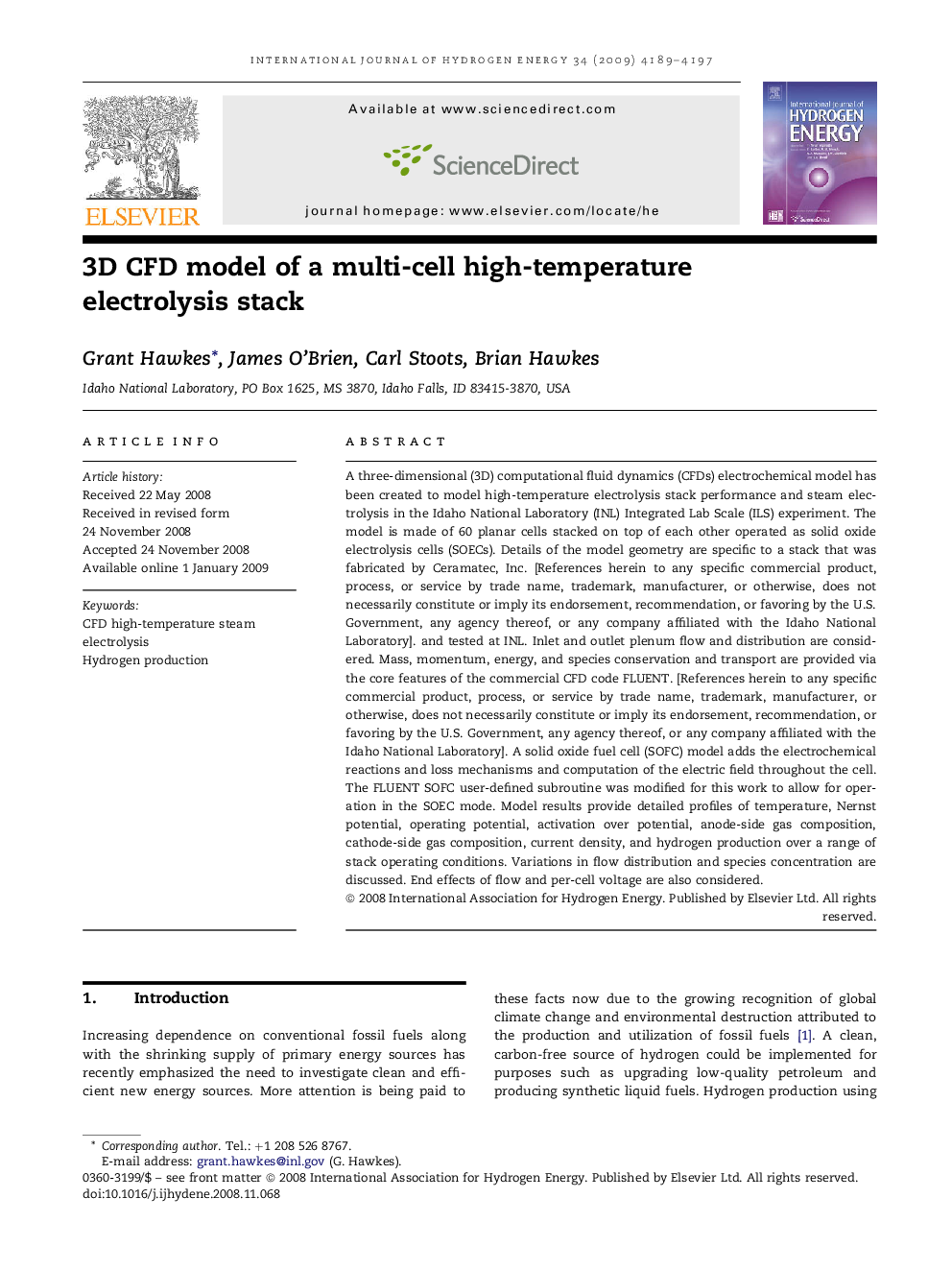| Article ID | Journal | Published Year | Pages | File Type |
|---|---|---|---|---|
| 1279053 | International Journal of Hydrogen Energy | 2009 | 9 Pages |
A three-dimensional (3D) computational fluid dynamics (CFDs) electrochemical model has been created to model high-temperature electrolysis stack performance and steam electrolysis in the Idaho National Laboratory (INL) Integrated Lab Scale (ILS) experiment. The model is made of 60 planar cells stacked on top of each other operated as solid oxide electrolysis cells (SOECs). Details of the model geometry are specific to a stack that was fabricated by Ceramatec, Inc. [References herein to any specific commercial product, process, or service by trade name, trademark, manufacturer, or otherwise, does not necessarily constitute or imply its endorsement, recommendation, or favoring by the U.S. Government, any agency thereof, or any company affiliated with the Idaho National Laboratory]. and tested at INL. Inlet and outlet plenum flow and distribution are considered. Mass, momentum, energy, and species conservation and transport are provided via the core features of the commercial CFD code FLUENT. [References herein to any specific commercial product, process, or service by trade name, trademark, manufacturer, or otherwise, does not necessarily constitute or imply its endorsement, recommendation, or favoring by the U.S. Government, any agency thereof, or any company affiliated with the Idaho National Laboratory]. A solid oxide fuel cell (SOFC) model adds the electrochemical reactions and loss mechanisms and computation of the electric field throughout the cell. The FLUENT SOFC user-defined subroutine was modified for this work to allow for operation in the SOEC mode. Model results provide detailed profiles of temperature, Nernst potential, operating potential, activation over potential, anode-side gas composition, cathode-side gas composition, current density, and hydrogen production over a range of stack operating conditions. Variations in flow distribution and species concentration are discussed. End effects of flow and per-cell voltage are also considered.
